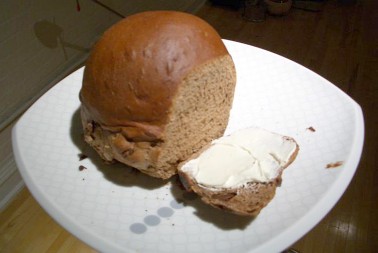the science of criminal responsibility
An early posting of mine on this blog was about science in courtrooms, and an interesting controversy regarding the role of expert witnesses and judges' ability to prevent their testimony. A related and very interesting issue was the topic of a commentary in a recent issue of the journal Nature Reviews Neuroscience. In this commentary, Nigel Eastman (Chair in Law and the Ethics of Psychiatry at the University of London) and Colin Campbell (Institute of Psychiatry at King's College London) discuss the complicated relationship between scientific studies of criminal behavior and legal questions of criminal responsibility and the likelihood of criminal behavior. I found it very intruiging, and an example of the complications when scientific research is applied to something subjective (law) instead of objective (health, engineering).
Their primary point is that the type of "questions that the courts and society wish answered and those that neuroscience [can answer]" are not the same. Those questions "fall into two broad domains, 'determining guilt' and 'predicting and preventing re-offending'." In both cases, the answers that neuroscience (and cognitive science more generally) can give are, in some sense, inappropriate for legal cases. I'd urge interested readers to read the whole paper, which is very clearly written, and (aside from a few fMRI images) is not technical at all. To whet your appetite, here are some selected quotes from the article on particular topics.
On determinism and culpability:
However, even if science does develop to show correlations of particular genes, or types of brain state, with aggression, will that necessarily infer diminished or absent moral or criminal culpability? (p 311)Cognitive scientists seek to explain large patterns of behavior with (relatively) simple rules. If we can explain why someone commits a crime by accounting for their behavior in their genetics, or their experiences, or even just by pinpointing what in their brain state allows (say) violence, does that mean that the accused no longer has free will in the matter, did not choose to act criminally, and is thus not culpable?
Such questions draw us into fundamental questions of philosophy, of Cartesian dualism versus scientific determinism... (p 311)
Unlike the forensic pathologist, who offers evidence that merely contributes to a factual finding that the law then 'uses' towards determining some ultimate issue, the forensic psychiatrist offers evidence that can come close to commenting on whether the defendant had the required intention for the crime of which he or she is accused. (p 312)
Indeed, some might say that, were we to achieve such a level of biological understanding of ourselves, we would have 'biologically explained away personhood', and have subsumed both legal and moral responsibility into biology. (p 317)
On law on its own terms:
Law is ultimately pragmatic. It directly addresses difficult moral questions on the basis that it must somehow offer answers, derived and expressed in its own terms. (p 312)If we allow that criminal responsibility is defined socially, and cannot be reduced to scientific notions of volition, how do we allow science, as it progresses, to inform this social construct that uses its own notion of truth (and justice)?
In law, there is no such thing as 'real' mental disorder, only definitions of it that are adopted for purposes that usually have nothing to do with medical constructions of mental disorder per se. (p 312)
...science describes things in being, while law applies artifices to determine abstract justice. (p 314)
On individuals in law versus populations in science:
Of course, such an aggregate approach runs fundamentally counter to the law's 'individual' approach to justice. Therefore, defendants are not sentenced on the basis of their being a member of a class of individuals with given probabilities of offending in particular ways, but on the basis of what they have done and who they are. And this implies that the criminologist or epidemiologist can, and should, never help. (p 315)Although civil law can deal with notions of fractional responsibility, criminal law is by and large black and white. Guilty or not guilty. But science (at every level) is about probabilities, and interactions, and general rules about populations. What kinds of science will need to advance to address the very narrow questions of individual guilt that the law needs to know about?
However, faced with a choice between biology-based evidence (that is more scientifically reliable but less informative about the individual) and psychology-based evidence (that is more informative but less scientificaly reliable), a court is likely to choose the latter. In doing so, the court will feel more at home, as, on a daily basis, courts are used to constructing their own 'understanding' of defendants... (p 316)
Interesting things to consider as our understanding of the brain gets better year by year...
Labels: science












